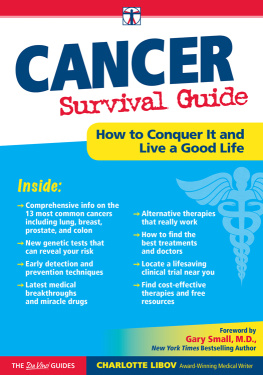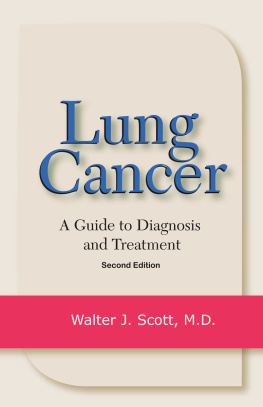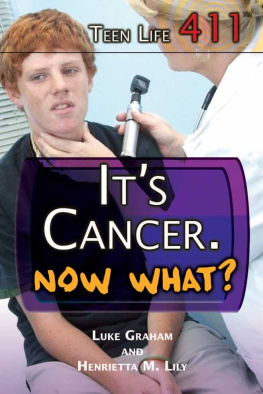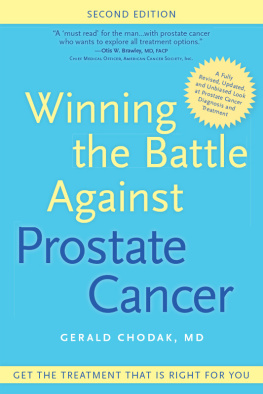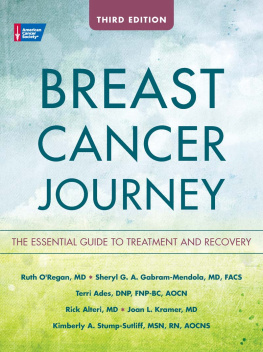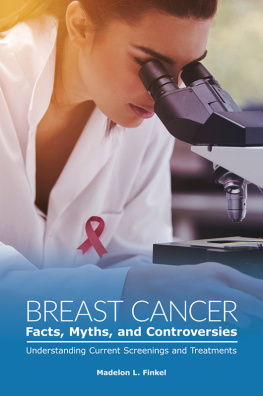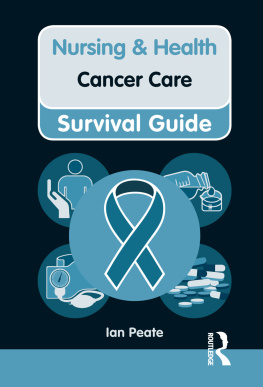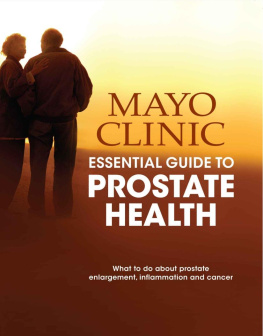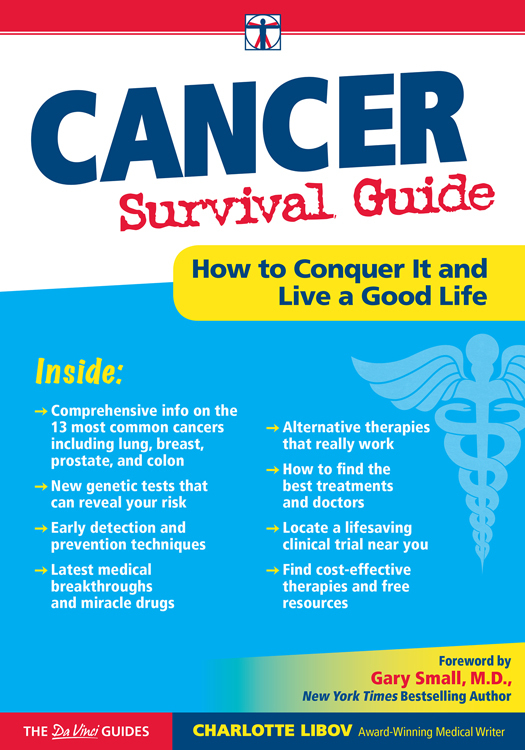
CANCER
Survival Guide
How to Conquer It and Live a Good Life
CANCER
Survival Guide
How to Conquer It and Live a Good Life
CHARLOTTE LIBOV

New York, NY, USA
HUMANIX BOOKS
DaVincis Cancer Survival Guide
Copyright 2016 by Humanix Books
All rights reserved
Humanix Books, P.O. Box 20989, West Palm Beach, FL 33416, USA
Library of Congress Control Number: 2014930398
No part of this book may be reproduced or transmitted in any form or by any means, electronic or mechanical, including photocopying, recording, or by any other information storage and retrieval system, without written permission from the publisher.
Interior design: Ben Davis
Humanix Books is a division of Humanix Publishing, LLC. Its trademark, consisting of the words Humanix is registered in the Patent and Trademark Office and in other countries.
Disclaimer: The information presented in this book is meant to be used for general resource purposes only; it is not intended as specific medical advice for any individual and should not substitute medical advice from a healthcare professional. If you have (or think you may have) a medical problem, speak to your doctor or healthcare practitioner immediately about your risk and possible treatments. Do not engage in any therapy or treatment without consulting a medical professional.
ISBN: 978-1-63006-014-5 (Paperback)
ISBN: 978-1-63006-015-2 (E-book)
This book is dedicated to all cancer survivors and their loved ones.
Contents
MOST PEOPLE DESIRE A long life, provided they maintain their health and independence. Thanks in part to advances in medical technology, we are now living longer than ever. Most of those born in 1900 would have been fortunate to have lived beyond age 50. Today, life expectancy approaches 81 years in many countries, which has led to the greying of our population. In 2010, more than 40 million Americans were aged 65 or older 12 times the estimate in 1900. If current trends continue unabated, we can anticipate a doubling of the number of older adults by 2030.
The goal for most of us is to achieve successful aging; we dont just want to live a long life, we want to live well throughout that long life. And we have made strides in achieving such quality longevity, according to the MacArthur Foundation Network on an Aging Society, which reported that genetics accounts for only about one-third of what determines wellness as people age. Healthy lifestyle strategies and effective medical treatments can help prevent age-related illnesses, including many forms of cancer, as well as extend the number of years of successful aging.
But despite our remarkable gains in life expectancy and a greater knowledge of how to live well as we age, not everyone is living better longer. Nearly three-quarters of people aged 65 and older suffer from one or more chronic medical illnesses, such as cancer, Alzheimers disease, Parkinsons disease, heart disease, hypertension, arthritis, and diabetes. The costs of these conditions exceeds hundreds of billions of dollars each year, and as the 78 million baby boomers begin to populate our older age group, our country must tackle a looming financial, social, and healthcare burden.
Prevention strategies can have a critical impact on many of these age-related illnesses. For example, Alzheimers disease afflicts more than five million people in the United States, and 44 million worldwide. Although no disease-modifying treatment has yet been discovered, recent research shows that healthy lifestyle behaviors may delay symptom onset and lower disease prevalence. A new analysis estimates that nearly 50 percent of Alzheimers cases worldwide could be attributed to modifiable risk factors, such as high blood pressure, obesity, smoking, depression, cognitive inactivity or limited education, and physical inactivity.
Many of these modifiable risk factors can prevent other diseases that burden our population at nearly every age, including heart disease, stroke, cancer, and arthritis. Remarkable medical advancements have led to effective treatment and prevention strategies for cancer, but people are not always informed about the best prevention, detection, and treatment methods available. Greater public awareness and expanded programs to help reduce smoking, increase physical activity, improve diet, and expand screening would have a considerable impact on the prevalence and mortality rate of cancer. The American Cancer Society estimates that tobacco smoking alone accounts for approximately 170,000 cancer deaths each year. In 2015, it is estimated that poor nutrition, physical inactivity, overweight, and obesity will contribute to 1.5 million cases of cancer.
When people understand the connection between their daily behavior and cancer risk, they can adjust those behaviors, lower their cancer risk, and extend their life expectancy. Legislative bodies can help to shape healthier behaviors. For instance, despite convincing evidence of the cancer risks from indoor tanning facilities, in 2013 four percent of US adults reported using such facilities during the previous year. That same year, 20 percent of female and five percent of male high school students reported using an indoor tanning device. As a result of such high usage rates, laws restricting a minors access to indoor tanning facilities have been enacted in 42 states.
These kinds of laws will save lives, but greater awareness about the disease, its physical and psychological impact, and practical strategies for treatment and prevention are still critically needed. Those at risk for cancer or facing the challenge of a cancer diagnosis have to make difficult decisions that will impact the quality and duration of their lives. They often read conflicting accounts of miracle cures, prevention methods, and diagnostic tests. Many people end up confused and overwhelmed by the weight of puzzling data. They need a way to put this daunting amount of complex information into perspective so they can make these vital decisions with the most rational and practical mindset, and in a very brief time frame.
The Cancer Survival Guide provides an informed perspective that will enlighten people at risk for cancer, patients already suffering from the disease, and their loved ones as well. By translating the latest scientific information into accessible language and practical advice, this important book will be the go-to guide for anyone navigating the threat of cancer and its consequences. Whether searching for the best doctor, deciding on an appropriate diagnostic test, or navigating the multiple options for treatment, the Cancer Survival Guide offers the kind of guidance that will allay anxieties and help people come up with an informed plan to deal with cancer.
Although the number of deaths from cancer has declined by 20 percent during the past two decades, scientists and doctors still have much to learn about cancer detection and treatment. While research for new treatments and cures continues, the Cancer Survival Guide provides an important and valuable resource for anyone desiring to live better and longer. I expect that this books clear, sensible, and knowledgeable guidance will not only become a welcome source of information and comfort to readers, it will help extend the years of successful aging for many of them.
Next page
